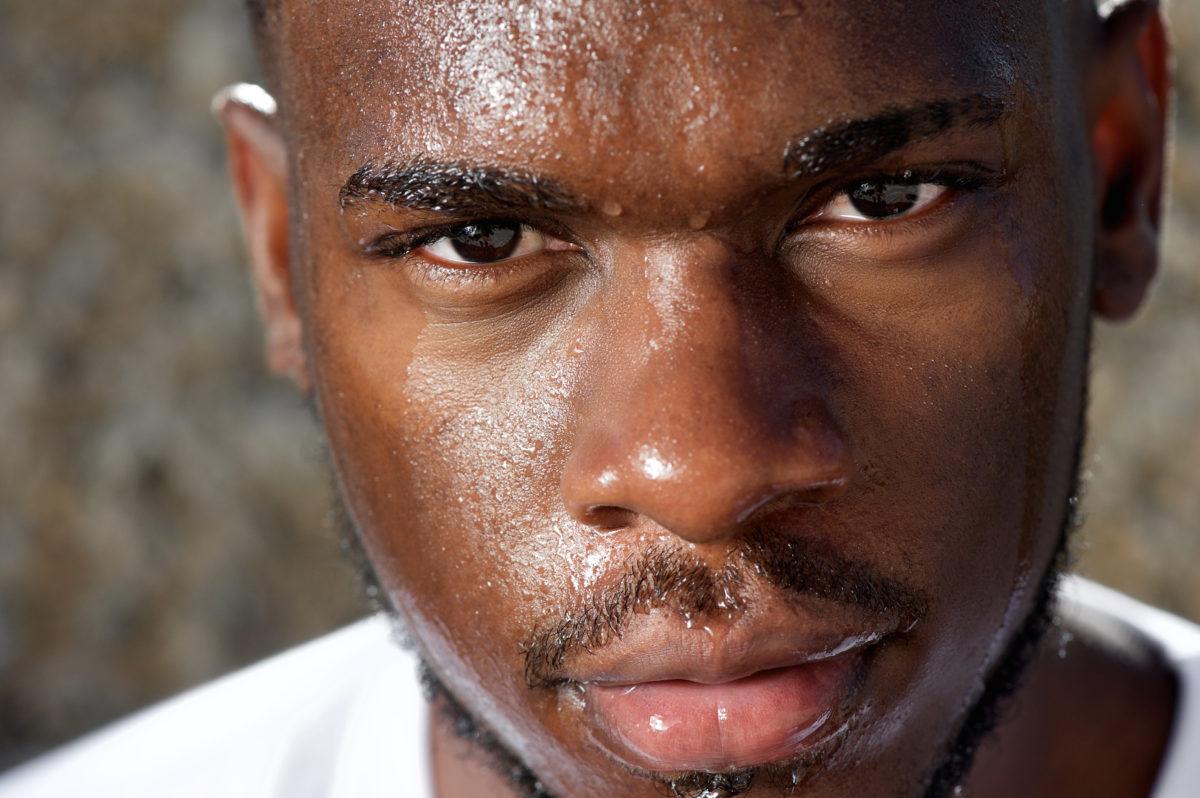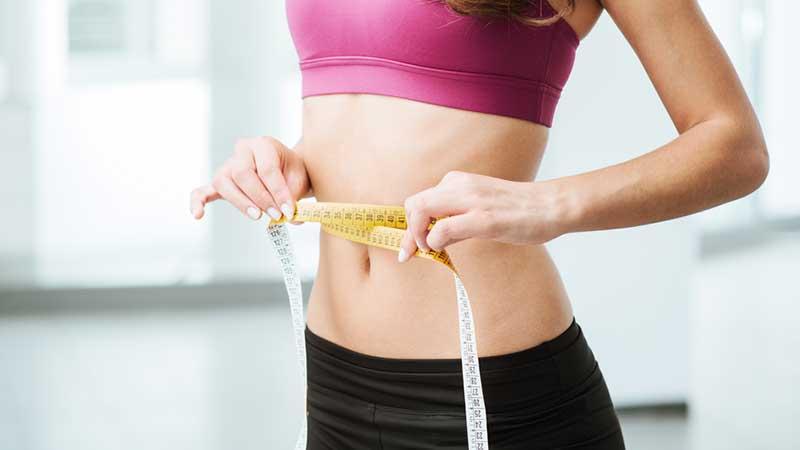When the body heats up and beads of sweat begin to form, many of us instinctively equate that slippery sheen with a accomplished workout and an efficient fat-burning machine. But does perspiration truly serve as a reliable gauge for fat loss? In an age where fitness myths circulate as easily as a morning jog, understanding the science behind sweating and weight loss is crucial. As we dive into the interplay between sweat, exercise, and fat burning, we’ll explore the mechanisms at play and separate fact from fiction. So, let’s unravel the mystery: Does sweating more really mean you’re burning more fat? 💦🔥
Understanding the Relationship Between Sweating and Fat Loss
When we engage in physical activity, our bodies naturally respond by increasing sweat production. This process serves several crucial purposes, particularly in regulating body temperature during exercise. While it may seem intuitive to assume that more sweating equates to enhanced fat loss, the reality is more nuanced. Sweating is primarily a cooling mechanism, not a direct indicator of fat being burned.In fact, factors such as humidity, temperature, and individual physiology can considerably influence sweat levels, often leading to misconceptions about their correlation with fat loss.
Fat loss occurs when there is a caloric deficit—where the energy expended exceeds the energy consumed. This deficit is maintained through a combination of proper diet and exercise. While sweating can occur during an intense workout that promotes fat burning, it is indeed the exercise itself, rather than the sweat produced, that is the vital component in achieving fat loss. Recognizing this distinction is essential for anyone looking to improve their fitness and health.
It’s also crucial to consider hydration. Excessive sweating without adequate fluid intake can lead to dehydration, affecting performance and overall wellbeing. Dehydration not only impairs physical function but may also mimic the illusion of weight loss on the scale, primarily due to water loss rather than fat loss. Here are some key points to remember:
- Hydration matters: Always replenish fluids lost through sweat.
- Monitor caloric intake: Achieve fat loss through diet and exercise, not just sweating.
- Body composition: Understand that muscle mass vs. fat mass will affect how your body sweats during workouts.
To illustrate the relationship further, the following table summarizes the main factors that influence sweating and their implications for weight loss:
| Factor | Impact on Sweating | Impact on Fat Loss |
|---|---|---|
| Ambient Temperature | Higher temperatures increase sweat production | No direct correlation with fat loss |
| Intensity of Exercise | More intense activity leads to increased sweating | Can promote fat loss if calories burned exceed intake |
| Hydration Status | Dehydration can reduce sweat output | Decreased performance can hinder fat loss efforts |
| Body Composition | More muscle mass generally leads to increased sweating | Higher muscle mass can enhance metabolic rate, aiding in fat loss |
The Science Behind Sweat: What Your Body Is Really Doing
sweating is one of the body’s natural mechanisms for regulating temperature,a process that involves several intricate systems working harmoniously. When your body temperature rises due to physical activity or environmental heat,your hypothalamus signals your sweat glands to release moisture onto the skin’s surface. This moisture evaporates, helping to cool you down.But while the act of sweating is primarily about temperature control, it often leads to misconceptions regarding fat burning and weight loss.
Many people assume that the more they sweat, the more fat they are burning. However, it’s important to recognise that sweat itself is not a direct indicator of fat loss.Instead, sweat primarily consists of water, electrolytes, and trace amounts of waste products. When you engage in intense exercise, your body works hard to cool itself, leading to increased perspiration. This can create the illusion of effective weight loss, yet what you are actually losing is primarily water weight, which can easily be regained once you rehydrate.
To understand the true metabolic processes at play, we can break down how your body utilizes energy. Here are some key points to consider:
- Fat and Carbohydrate Usage: The body uses both carbohydrates and fats for energy, depending on various factors such as intensity and duration of the activity.
- Caloric Deficit: To lose fat, you need to create a caloric deficit, meaning you burn more calories than you consume, regardless of how much you sweat.
- Individual Factors: Genetics, fitness level, and environmental conditions also play significant roles in how much you sweat and the efficiency of fat metabolism.
Additionally, understanding heart rate during exercise provides insights into how efficiently your body is burning calories. This table summarizes the relationship between exercise intensity, heart rate, and estimated calories burned:
| Exercise Intensity | Target Heart Rate (% Max) | Estimated Calories Burned per Hour |
|---|---|---|
| Low | 50-60% | 200-300 |
| Moderate | 60-70% | 300-500 |
| High | 70-85% | 500-800 |
in essence, while sweating can be a byproduct of your body working hard, it does not equate to fat burning in a straightforward manner. Focusing on consistent exercise,balanced nutrition,and overall caloric expenditure is vital for effective fat loss rather than becoming preoccupied with the volume of sweat produced during a workout.
Debunking Common Myths About Sweat and Weight Management
When it comes to weight management, many people believe that sweating is directly linked to fat loss.However, it’s crucial to understand that while sweating can be an indicator of physical activity, it does not equal fat burning. The body sweats to regulate its temperature, and the amount of sweat produced varies widely among individuals. Factors influencing sweating include:
- Genetics: Your natural predisposition affects how much you sweat.
- Surroundings: Hot or humid conditions can cause increased sweating.
- Hydration: Well-hydrated individuals may sweat more efficiently.
- Fitness Level: Fitter individuals often sweat more readily as their bodies adapt to exercise.
Moreover, losing weight and burning fat are not synonymous with sweating profusely during a workout. When you sweat,you are primarily losing water,and while this can lead to short-term weight reduction on the scale,it does not reflect true fat loss. In fact, a subsequent rehydration can easily restore this lost weight. Consider the following:
| Factor | Impact on Weight |
|---|---|
| Sweating | Temporary weight loss (water weight) |
| Fat Oxidation | True fat loss requires a calorie deficit |
Additionally, the type of exercise you engage in is a far better determinant of fat loss than the amount you sweat. High-intensity workouts, resistance training, and even consistent moderate exercise can effectively contribute to weight management when combined with a balanced diet. Understanding that the body’s ability to burn fat is more about metabolic processes and energy expenditure than sweat levels is essential.
Lastly, it’s important to recognize the common misconception that “sweating out toxins” during a workout leads to a healthier body. While some degree of toxin elimination occurs through perspiration, the majority of toxin removal is conducted by our liver and kidneys. Staying hydrated, maintaining a nutritious diet, and engaging in regular physical activity are fundamental to effective weight management, far beyond how much you might sweat in the process.
Practical Tips for Effective Fat Burning beyond Just Sweating
When it comes to effective fat burning, focusing solely on sweat might be misleading. While perspiration is an indicator of physical exertion, it doesn’t directly correlate with calorie or fat expenditure. Here are some practical ways to elevate your fat-burning game:
- Incorporate strength training: Building muscle increases your resting metabolic rate, meaning you burn more calories even at rest.
- Prioritize high-intensity interval training (HIIT): Short bursts of intense activity followed by rest periods can elevate your heart rate and promote fat oxidation.
- Stay hydrated: Water plays a crucial role in metabolism. proper hydration can enhance your performance and help with recovery.
- Optimize your diet: Focus on a balanced intake rich in whole foods, protein, and healthy fats to support sustained energy and fat loss.
It’s also essential to understand the dynamics of your workouts. The type of exercises you engage in can significantly influence fat burning. Consider tracking your heart rate, as it provides a clearer picture of your workout’s efficacy. A well-structured routine might include:
| Exercise Type | Fat-burning Potential | Duration |
|---|---|---|
| Steady-State Cardio | Moderate | 30-60 Minutes |
| HIIT | High | 15-30 Minutes |
| Weight Training | High | 30-45 Minutes |
Lastly, remember that recovery is just as important as your workout regimen. When you allow your body to rest and recover, it becomes more effective at burning fat. Incorporate practices such as:
- Sleep: Aim for 7-9 hours of quality sleep per night to support your metabolism.
- active recovery: Engage in low-intensity activities like walking or yoga on rest days to promote blood flow and healing.
- Nutrition timing: Consider eating strategically around your workouts to fuel performance and enhance recovery.
Q&A
Q&A: Does Sweating More Mean you’re Burning More Fat? 💦🔥
Q1: What exactly happens in our bodies when we sweat?
A1: Sweating is a natural process that helps regulate your body temperature. When you exercise or are in a hot environment, your body cools itself by releasing moisture through sweat glands. This moisture evaporates off your skin, which cools you down. While sweating is a sign of exertion, it doesn’t directly correlate with fat burning. It’s more about how your body is reacting to heat and activity.
Q2: So, if I’m sweating a lot during my workout, am I burning more calories?
A2: Not necessarily! The amount you sweat is influenced by various factors including temperature, humidity, hydration levels, and even genetics. It’s possible to burn a significant number of calories without a lot of sweat. Conversely, sweating a lot doesn’t guarantee you’re burning fat; you might just be losing water weight.
Q3: what’s the relationship between sweating and fat loss?
A3: Fat loss primarily occurs when you create a calorie deficit — burning more calories than you consume. This process doesn’t hinge on how much you sweat. Fat oxidation happens at a cellular level, autonomous of the liquid you lose through perspiration. Regular exercise, a balanced diet, and proper hydration are the keys to effective fat loss.
Q4: Does the type of exercise affect how much I sweat?
A4: Absolutely! High-intensity workouts, cardio, and activities in hot environments tend to make you sweat more. For instance, a vigorous spin class might leave you drenched, while a leisurely walk may not elicit much sweat. However,keep in mind that the intensity of your workout does not solely determine fat burning — duration,frequency,and effort matter just as much.
Q5: Should I focus on how much I sweat as a measure of workout efficacy?
A5: It’s easy to get caught up in sweat as a measure of a good workout, but it’s not the best metric. Rather, focus on your overall performance, endurance, and how you feel at the end of your session. Strength, flexibility, and cardiovascular improvements are far more important indicators of fitness than the puddle of sweat on the gym floor!
Q6: How can I better gauge if I’m burning fat during my workouts?
A6: Instead of relying on sweat alone, consider tracking your heart rate, perceived exertion, and even using fitness apps or wearables that can monitor your calorie expenditure. Additionally, keeping a food diary and paying attention to your nutrient intake can help you ensure that you’re working towards your weight loss goals safely and effectively.
Q7: what’s the take-home message about sweating and fat loss?
A7: Sweating is a natural bodily function that doesn’t necessarily indicate fat loss. While it’s a sign that you’re working hard and your body is regulating its temperature, true fat loss is about maintaining a healthy lifestyle with balanced nutrition and consistent physical activity. So, sweat it out, but remember — the scale of success is more than just a wet shirt!
The Conclusion
while sweating is often seen as a badge of honor during workouts, it’s essential to understand that it doesn’t directly correlate with fat loss. The body’s intricate systems are involved in burning fat, and sweat is merely a signal of temperature regulation, not a definitive measure of caloric burn or fat reduction.
As you lace up for your next session, remember that the intensity of your workout, your diet, and your overall fitness journey play far more significant roles in achieving your goals than the amount you sweat. So, embrace the glisten, but keep your focus on the bigger picture—healthy habits, consistent effort, and a balanced approach to fitness. After all, it’s not just about how much you sweat; it’s about how you nourish your body, challenge your limits, and enjoy the journey to a healthier you. stay hydrated, stay motivated, and let your body tell its own unique story of transformation! 💪✨



